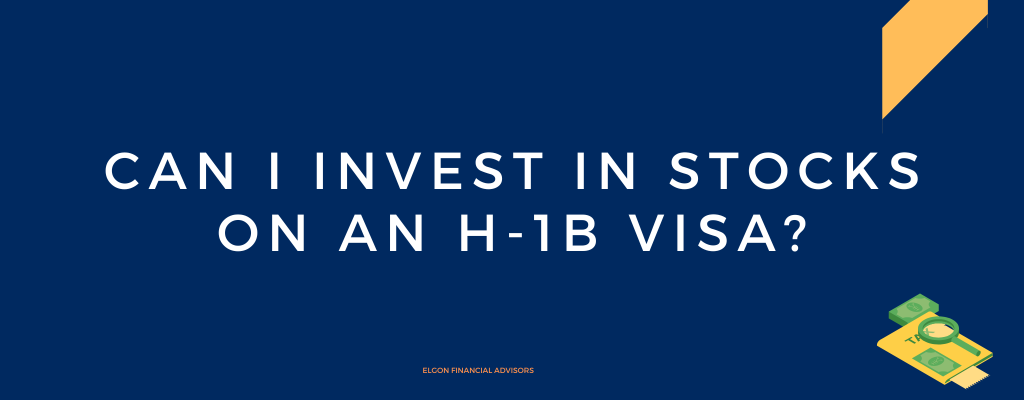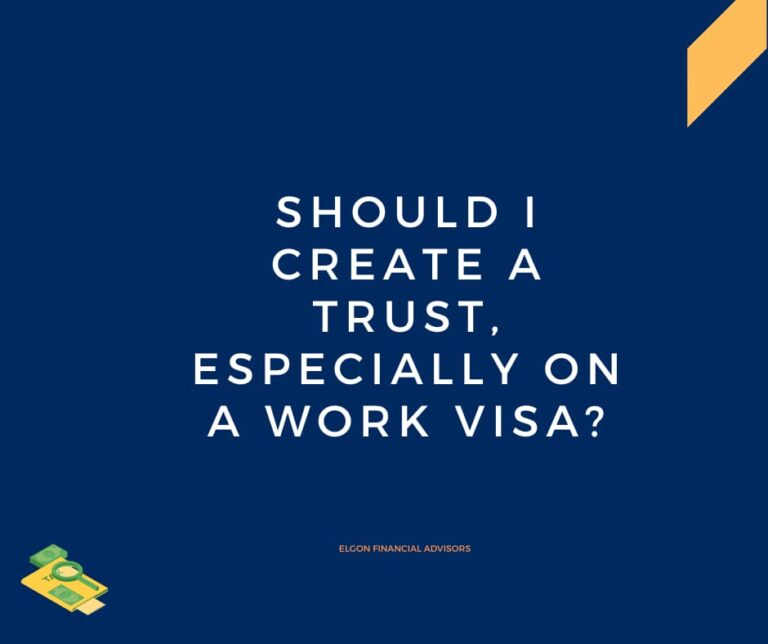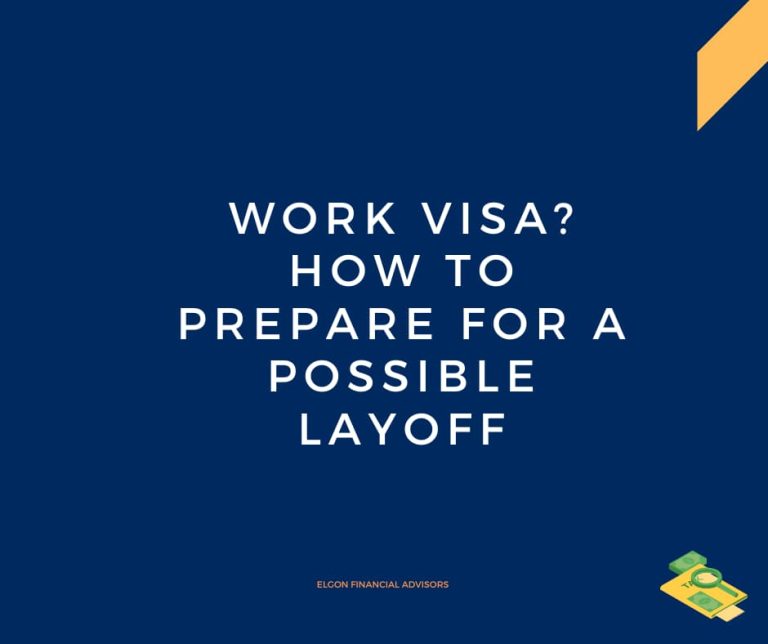
In today’s post, I’ll discuss how to grow your wealth in the US via investing in the stock market when on a work visa. The work visas in question are H-1B, O-1, L-1, E3, TN, and H1B1, even though the most common one, due to the numbers given out, is the H-1B.
The visas are temporary, and there is an expectation that the holder will go home at the end of their stay.
As a visa holder, you are allowed to invest in the US stock market, starting with your employer’s 401k, but there are some rules you want to adhere to.
In addition, some brokerages/custodians don’t want to deal with a foreign national on a work visa due to their KYC requirements. For example, on their site, Vanguard says you need to be a US citizen with a US mailing address to open an account with them.
Let’s dive into the rules and considerations for investing in the US on the H-1B and other work visas.
What Are The Rules For H-1B Visa Holders Investing In Stocks?
Legal Framework and Eligibility: Passive Income
Work visas like H-1B are tied to the employer who petitioned you. This means that the only job you are allowed to engage in the US to make an active income is the job that got you the visa.
It’s why immigration lawyers warn you to be careful even when considering other jobs in the company.
You are allowed to have passive income, which is where investing in the stock market comes in.
According to USCIS, Passive Income Is income from sources that don’t require you to be actively involved in that activity. Buying a stock today and selling it in a month is okay.
But buying a stock and selling it a few minutes later repeatedly (day trading) is considered an active job. This can affect your H-1B visa.
Tax Considerations
If you trade in stocks and they generate income in the form of dividends, capital gains, interest, and other forms of investment income, you need to report this to the IRS for appropriate taxation.
As a visa holder, you file taxes either as a tax resident or tax non-resident. To figure out your status, use the IRS 183-day rule. The rule uses the Substantial Presence Test.
To pass the SPT test – you need to have been physically in the US for 183 days calculated as follows.
- 31 days in the current year
- 1/3 of the days in the previous year
- 1/6th of the days in the previous 2 years
This post describes specific examples: Determining Your Tax Residency Status – It’s Not The Same As Your Immigration Status.
From my experience, by the time you – the H-1B and other work visa holders start to invest in the Stock market, you’ve most likely met the SPT, and you’ll be filing taxes as a US tax resident.
What Are The Requirements To Start Investing In Stocks?
Documentation Needed
To be able to invest in the US market in the form of stocks, you need the following type of documentation:
- Social Security Number (SSN) or Individual Taxpayer Identification Number (ITIN).
- Proof of US residency and visa status (e.g., H-1B approval notice, I-94).
- A personal ID, like your passport, driver’s license, etc. Most companies will want to see your passport.
Setting Up a Brokerage Account
Once you confirm you meet their KYC requirements, open the account at a brokerage firm (custodian).
If you have a 401k through your company, it’s possible to have it at a custodian who will not let you open an individual account if you are on a work visa.
For example, Vanguard is a 401k custodian for many employers but won’t let non-citizens open accounts.
Choose a reputable firm, and ideally, one that allows you to have a foreign address in case you have to leave and want to leave your account there. Some examples of custodians that will allow a work visa holder to open an account are Robinhood, Interactive Brokers, and Schwab.
Depending on your home country, there might be restrictions or additional verification processes for H-1B visa holders.
What To Invest In?
You have thousands of options for mutual funds, ETFs and stocks you can invest in. Picking the right one will be determined by your goals, your time horizon, and how much risk you are willing to take.
At a high level, an ETF – Exchange Traded Fund and a Mutual Fund are similar in that they are a collection of individual stocks or other funds.
ETF – Can be sold throughout the day while a Mutual Fund is traded at the end of the day. There are other differences, explained in the Investopedia article, the difference between an ETF and a Mutual Fund.
Day Trading VS. Long-Term Investing: What Are The Differences?
Day Trading Considerations
Day trading is an active activity for H-1B and other work visa holders. It consists of frequent trading throughout the day based on technical analysis of the market.
It calls for discipline and 100% focus and is a full-time job. You are not allowed to hold another job unless you have two visas; hence, day trading can jeopardize your legal status.
Long-Term Investing Benefits
A long-term investing strategy – buy and hold aligns better with H-1B visa regulations. It allows you to invest while spending your time focused on other aspects of your life, like family and career.
You have the potential for steady financial growth through diversified, long-term investments. Follow Warren Buffet’s rules on investments, which explains how he’s become one of the richest people in the world.
What Other Investment Options Are Available To H-1B Visa Holders?
Retirement Accounts
Contribute to employer-sponsored 401(k) plans until the match. If you are in a high-income bracket, it’s worth maxing out.
In 2025 you can contribute up to $23,500 with a catch-up contribution of up to $7,500 if between 50 and 59 or if over 64.
If you are between 60 and 63 – your catchup contribution is $11,250.
Roth accounts and other Tax-advantaged accounts are okay. Still, it’s important to know that if you end up retiring outside the US, the majority of other countries will treat them like other individual accounts and tax them accordingly.
My Kitces article details this topic: Investing For Nonimmigrant Visa Holders: Understanding Visa Types, Investment Challenges and Tax Implications.
Cryptocurrencies And Alternative Investments
Other forms of investing include options like cryptocurrencies, certificates of deposit (CDs), and fixed deposits. You are allowed to trade in cryptocurrencies, like Bitcoin, as long as you don’t engage in day trading.
An H-1B visa holder can invest by buying equity in US companies, including startups. You can also invest in any business; the only thing you are not allowed to do is be actively involved in running the company or the business.
Real Estate Investments
Investing in real estate is okay, but keep the following in mind.
- If you buy real estate as a form of passive income – you cannot be the one to manage it as a rental. In the eyes of the law, this becomes an active activity generating income for you.
- Since you are not a US citizen, it’s important to consider estate planning implications. An NRA who passes away holding US situs assets only gets a $60,000 tax exemption. The rest of the estate is taxed at 40%. A US citizen or green card will get up to $13 million, meaning that most of the population ends up without paying any estate tax.
- There are ways to mitigate this but that’s a different post.
How Do Taxes Work For H-1B Visa Holders’ Investment Income?
Tax Obligations
Assuming you are filing taxes as a US tax resident, you will be taxed as follows.
Capital Gains Taxes: If you sell your stock, ETF, or mutual fund and make a gain, and you held it for less than a year – you’ll pay ordinary income tax (your highest level) on your gains.
If you held it for more than a year, you’d pay long-term capital gains, either 0%, 15%, or 20%, based on your income and filing status.
Capital Losses: If you make either short-term or long-term losses, you are allowed to have them cancel each other, and if there is extra, you can use that to lower your taxable income every year until you use all the losses.
You can deduct between $1,500 and $3,000 every year based on your filing taxes.
Is Tax-loss Harvesting: How to Boost Your Portfolio Gains
Dividends: Dividends come in two flavors – ordinary dividends – taxed at ordinary income tax level, and qualified dividends, taxed at lower levels (0%, 15%, 20%)
Using Professional Help: Tax Filing
I see a lot of mistakes in filing taxes, for example, reporting the wrong basis, confusing the tax-loss strategy, not reporting all the interest, and failing to carry losses forward.
For this reason, I suggest consulting a tax professional to file accurate returns.
Can Investing Help Transition From H-1B To EB-5 Visa?
Overview of EB-5 Visa Requirements
The EB-5 visa is granted to those who are able to invest in a commercial enterprise in the US and create 10 permanent jobs for qualified US workers.
According to USCIS, you must invest a minimum of $1.8 million dollars, which will adjust regularly for inflation. You can make the EB-5 investments while on the H-1B visa, but you must be an accredited investor.
This means you have a net worth of over $1 Million, excluding your primary residence, and a stable income of over $200,000 (single) or over $300,000 (married).
It’s best to consult a legal and tax attorney before you go down this path.
There are other issues to consider when pursuing a green card using this method.
What Are The Risks Of Investing On An H-1B And Other Work Visas?
Employment Dependency
One of the biggest risks facing your investment plan is your employment status. If you lose your job, you have 60 days to leave the country, find another job, or change to another visa type.
Recovering From A Job Loss On A Work Visa: An Action Plan
How To Prepare For a Job Loss On A Work Visa
If you’ve been in the country for 6 years, and your visa is not renewed, you may find yourself needing to leave the country in a hurry.
You’ll be forced to sell your investments, pay the taxes, and take the money with you or leave the accounts in the US; there are pros and cons to each option.
The key is to plan for all this before you start investing. Basically, you want to have an exit strategy. We are happy to discuss this with you before you start investing.
Market Volatility
Volatility will cause the market to go up and down as it reacts to different political and economic situations. You can’t time the market, so investing based on your time horizon is the only way to deal with this.
For example, if you need the money in the next 2-3 years, consider things like High Yield Savings Accounts or CDs. The goal is to preserve the capital. On the other hand, if you don’t need that money for 10+ years, you can invest it in stocks in the form of ETFs, Mutual funds, and other options.
So, it’s important to understand your risk tolerance and learn as much as possible about investing and other aspects of personal finance.
We Help H-1B Visa Holders With Investing
Being a work visa holder (H-1B, TN, O-1, E3, L1, H1B1) should not stop you from being able to build wealth in the US via investing in the market.
To invest responsibly, we recommend consulting professionals for legal, tax, and financial guidance.
Ready To Explore Investment Strategies Tailored to H-1B And Other Work Visa Holders?
Check out our process that will help you evaluate our services, and let you make an informed decision about working together.
Free Financial Assessment
If not ready to start, that’s okay, but please stay on top of our regular updates by email or by joining here. Sign Up Here

6 Things to Do
When Starting A Job on H-1B Visa
You are starting a new job on a work visa, there are some critical things, that will set up for financial success in the first 3-6 months. Download the free guide below for the detailed list!
We never spam. By signing up you’ll also receive access to future resources right to your inbox.
Disclaimer: This article is provided for general information and illustration purposes only. Nothing contained in the material constitutes tax advice, a recommendation for the purchase or sale of any security, investment advisory services, or legal advice. I encourage you to consult a financial planner, accountant, and/or legal counsel for advice specific to your situation. Reproduction of this material is prohibited without written permission from Jane Mepham and all rights are reserved. Read the full disclaimer here.






